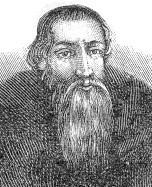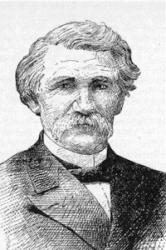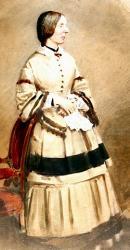
1530 - 1592 Person Name: Nicolaus Selnecker Hymnal Number: 58 Author of "Now cheer our hearts this eventide" in The Methodist Hymnal Selnecker, Nicolaus, D.D., son of Georg Selnecker (Selneccer, Schellenecker, who was protonotarius to the Nürnberg magistracy, but lived at Hersbruck near Nürnberg) was born at Hersbruck Dec. 5, 1532. In 1536 he was removed to Nürnberg, and became during his school time, when only twelve years old, organist at the chapel in the Kaiserburg there. He went to the university of Wittenberg in 1550 (where he became a favourite pupil of Melanchthon), graduated M.A. on July 31, 1554, and subsequently lectured as a privat-docent, sometimes to 200 students. In the end of 1557 he was appointed second court preacher at Dresden, and tutor to the heir apparent Prince Alexander, having also to supervise the education of the choirboys of the royal chapel. He was ordained at Wittenberg Jan. 6, 1558. The principal theologians at the Saxon court at that time were inclined to follow Melanchthon's lead and to approximate to Calvin's teachings regarding Consubstantiation. When therefore Selnecker thought it his duty openly to declare his adhesion to strict Lutheranism, he found his position almost untenable. When Martin Hoffmann of the Neustadt church in Dresden preached against the Elector August's passion for game preserving, Selnecker took Hoffmann's part. His enemies took advantage of this, and managed so that after Hoffmann had been expelled from Dresden, in August, 1564, Selnecker was requested to seek work elsewhere. He preached his farewell sermon at Dresden on March 15, 1565, and on the 26th he entered on his new office of Professor of Theology at Jena.
After the siege of Gotha, Duke Johann Wilhelm of Saxony recalled Wigand and other professors of Theology who had been expelled from Jena, in 1561, as adherents of Flaeius; and Selnecker, not being so extreme a Lutheran as they, had to leave Jena. Thereupon the Elector August again received him into favour, appointed him professor of Theology at Leipzig, and also pastor of St. Thomas's church and Superintendent of Leipzig. He entered on his duties at Leipzig in August 1568, and for some time worked quietly and successfully. In July 1570 the Elector acceded to the request of Duke Julius of Brunswick for Selnecker's services, and gave Selnecker leave of absence to go to Wolfenbüttel as court preacher and general superintendent. Here he succeeded in inducing the clergy to receive the so-called Saxon Confession, and persevered in zealous visitations of churches, schools, &c. After 1572 he resided at Gandersheim, took an interest in the Gymnasium there, &c. In 1573 he also visited, and drew up a book of Church Order and Discipline for the district of Oldenburg-Jever. But in Brunswick, what with Martin Chemnitz the Superintendent of Brunswick, who was a High Lutheran, the Duke who wished for peace, and the other General Superintendent at Wolfenbüttel, Selnecker found it a difficult matter to work comfortably, and was himself accused of Crypto-Calvinism. He therefore gladly accepted the Elector August's recall to Leipzig, and began to lecture there again in Feb. 1574. In 1576 he was once more appointed pastor of St. Thomas's Church, and Superintendent. At Leipzig the sacramental controversy broke out afresh, and Selnecker became deeply involved therein, lie was then engaged in drawing up the Formula of Concord (meant to unite the Lutherans, but to exclude the Romanists on one hand, and the Calvinists on the other), which was finally revised on May 29, and published on July 22, 1577. The Formula of Concord was so far a success that it was very largely subscribed, but at the same time its authors, and specially Selnecker, were subjected to the most violent abuse both from the High Lutherans and from the Galvinists, so much so that he called 1579 his "year of patience and silence." For a few years immediately thereafter his life was a more peaceful one, and he found time to devote to poetry and music. At this time he assisted greatly in the building up of the famous Motett Choir of St. Thomas's Church, which J. S. Bach afterwards conducted. But on the death of the Elector August in 1586 the real direction of affairs passed into the hands of Dr. Nicolaus Crell, Chancellor to the Elector Christian I., and under his rule the Lutheran clergy were gradually displaced by Melanchthonians and Crypto-Calvinists. When the new court preacher Salmuth began to issue a German Bible with notes in which he clearly taught Calvinism and impugned the Formula of Concord, Selnecker published a pamphlet in opposition, and was in consequence deprived of his offices on May 17, 1589. For a time he stayed on in his own house in Leipzig, and used his pen in controversy. But after haying received, on Oct. 22, notice to cease writing, he thought it prudent to leave Leipzig, He found many sympathisers, and after a short time spent in Halle and then in Magdeburg, he accepted the appointment of Superintendent at Hildesheim. Here he had many anxious and weighty matters to settle, and was finally called on, in 1591, to arbitrate in matters of dispute at Augsburg. Returning from Augsburg in stormy December weather, and being worn out and seriously ill, he reached Hildesheim half dead, and was confined to his room till April. Meantime the Elector Christian I. had suddenly died, and his widow, after deposing the Chancellor Crell, proceeded to recall those whom Crell had banished. Selnecker, spite of his weakness, welcomed the idea of returning to Leipzig, left Hildesheim on May 9, and reached Leipzig on May 19; but only to die. He died at Leipzig, May 24, 1592.
Seluecker, as we have seen, was a prominent figure in the ecclesiastical history of Germany in the latter half of the sixteenth century, and a good illustration of the extremes to which theological controversies were then carried. He was the author of some 175 theological and controversial works, in German and Latin, perhaps the most important being his Institutio Religionis Christianae, Frankfurt, 1572-73. He also ranks, with Helmbold and Ringwaldt, among the most important hymnwriters of the period. Amid the manifold changes and chances of his life he found inspiration and consolation in the study of and recourse to the Psalter, and in his love of music. In Latin verse he published a Scriptural play on the Fall of our First Parents, entitled Theophiania, &c, Wittenberg, 1560 [Brit. Mus.], and a version of the Psalms as Paraphrasis Psalterii, Heinrichstadt, 1573…His German hymns partake for the most part of the objective churchly character of the hymns of the Reformation period, and indeed contain many reminiscences of them. Of the rest, many only too faithfully mirror the misfortunes and changes and conflicts of his life, and are full of personal matter and careless in style. Still there remain not a few worthy of note, in which a genuine piety, a deep and fervent love to the Saviour, and a zeal for the best interests of His Church on earth, are expressed in clear, flowing and musical style.
The hymns by Selnecker which have passed into English are:—
i. Ach bleib bei uns, Herr Jesu Christ. Peace and Orthodoxy. It has sometimes been said of this hymn that st. i., ii. are by Selnecker, and that the rest are a later addition. The opposite however is the case. The full form appeared in theGeistliche Psalmen, &c, Nürnberg, 1611, p. 597, in 9 stanzas, viz.:—
1. Ach bleib bey uns, Herr Jesu Christ.
2. In diser schweren betrübten Zeit.
3. Herr Jesu, hilff, dein Kirch erhalt.
4. Erhalt unns nun bey deinem Wort.
5. Ach Gott es geht gar libel zu.
6. Den stoltzen Geistern wehre doch.
7. Die Sach und Ehr, Herr Jesu Christ.
8. Dein Wort ist unsers Hertzens Trutz.
9. Gib dass wir leben in deim Wort.
The text of 1611 is in H. Thiele's ed. of Selnecker's Geistliche Lieder, 1855, p. 31, and in the Berlin Geistliche Lieder, ed. 1863, No. 408.
The translations in common use from this text:—
1. Lord Jesus with Thy children stay. This is a tr. of st. 1, 2, 8, 6, 9, 3 by J. Swertner in the Moravian Hymn Book 1789, No. 6 (1886, No. 6).
2. Ah Jesu Christ, with us abide. This is a good tr. of st. 1-5, 9, by Dr. Kennedy as No. 41 in his Hymnologia Christiana 1863, repeated in Holy Song, 1869.
3. Lord Jesu Christ, with us abide, For round us fall, &c. By Miss Winkworth, of st. 1, 2, in her Chorale Book for England.
4. Forsake us not, 0 Lord be near. Other trs. are-—(1) Abide with us, O Jesu dear," as No. 336, in pt. i. of the Moravian Hymn Book, 1754. (2) "Lord Jesu Christ, with us abide, 'Tis now." By H. J. Buckoll, 1842, p. 69. (3) "With us, Lord Jesus Christ, abide." By Dr. G. Walker, 1860, p. 61.
ii. Christus der wahre Gottes Sohn. Holy Baptism. Translated as:—
Now Christ, the very Son of God.
iii. Hilf, Herr, mein Gott, in dieser Noth.
Cross and Consolatio. In hisChristliche Psalmen, 1587, in 15 lines entitled "Anno 1565. God knows why." It was probably written during his last months at Dresden. It has indeed been said to have been written to comfort Martin Hoffmann, diaconus of the Holy Cross Church at Dresden, on his expulsion after preaching about the Elector August's passion for hunting and game preserving; but the hymn is dated 1565, and Hoffmann left Dresden in August, 1564. The form translated into English is:—
Hilf, Helffer, hilf in Angst und Noth. The translations are:—
1. My Helper, aid: Thy mercy show. By A. T. Russell, in full, as No. 223 in his Psalms and Hymns. 1851.
2. Help, Saviour! help, in fear and need By E. Cronenwett, in full, as No. 410 in the OhioLutheran Hymnal 1880.
3. Help, Jesus, help! in woe, in need. By Miss Manington in her Footprints of the Holy Dead, &c, 1863, p. 8.
iv. Lass mich dein sein und bleiben. Close of Service. This is a beautiful stanza of 8 lines which is very frequently used in Germany at the close of Divine service. It was written as his daily prayer . The translations are:—
1. Let me be Thine for ever, My gracious. This is a tr. of st. i.-iii. by Dr. M. Loy as No. 230 in the Ohio Lutheran Hymnal, 1880.
2. Make me Thine own and keep me Thine. By Miss Winkworth in her Christian Singers of Germany, 1869, p. 152.
v. 0 Herre Gott, in meiner Noth. For the Dying. Founded on Ps. cxvi. 9. Translated as:—- 0 Lord my God, I cry to Thee. This is a good and full tr. by Miss Winkworth in her Lyra Germanica 2nd Ser. 1858, p. 212, and her Chorale Book for England, 1863, No. 192.
vi. Wir danken dir, Herr Jesu Christ, Dass du gen Himmel gefahren bist. Ascension. The translation in common use is:—
We thank Thee, Jesus! dearest Friend, that Thou didst.
Other trs. are—- (1) “Lord Jesus Christ! we thank Thee now." This is No. 334, in pt. i., of the Moravian Hymn Book, 1754. (2) "To Thee, our Lord, all praise be given."
vii. Wir danken dir, o treuer Gott. Absolution. Translated as:—
O Faithful God, thanks be to Thee. By C. H. L. Schnette, in full, as No. 246 in the Ohio Lutheran Hymnal 1880. [Rev. James Mearns, M.A.]
--Excerpts from John Julian, Dictionary of Hymnology (1907)
Nicolaus Selneccer


